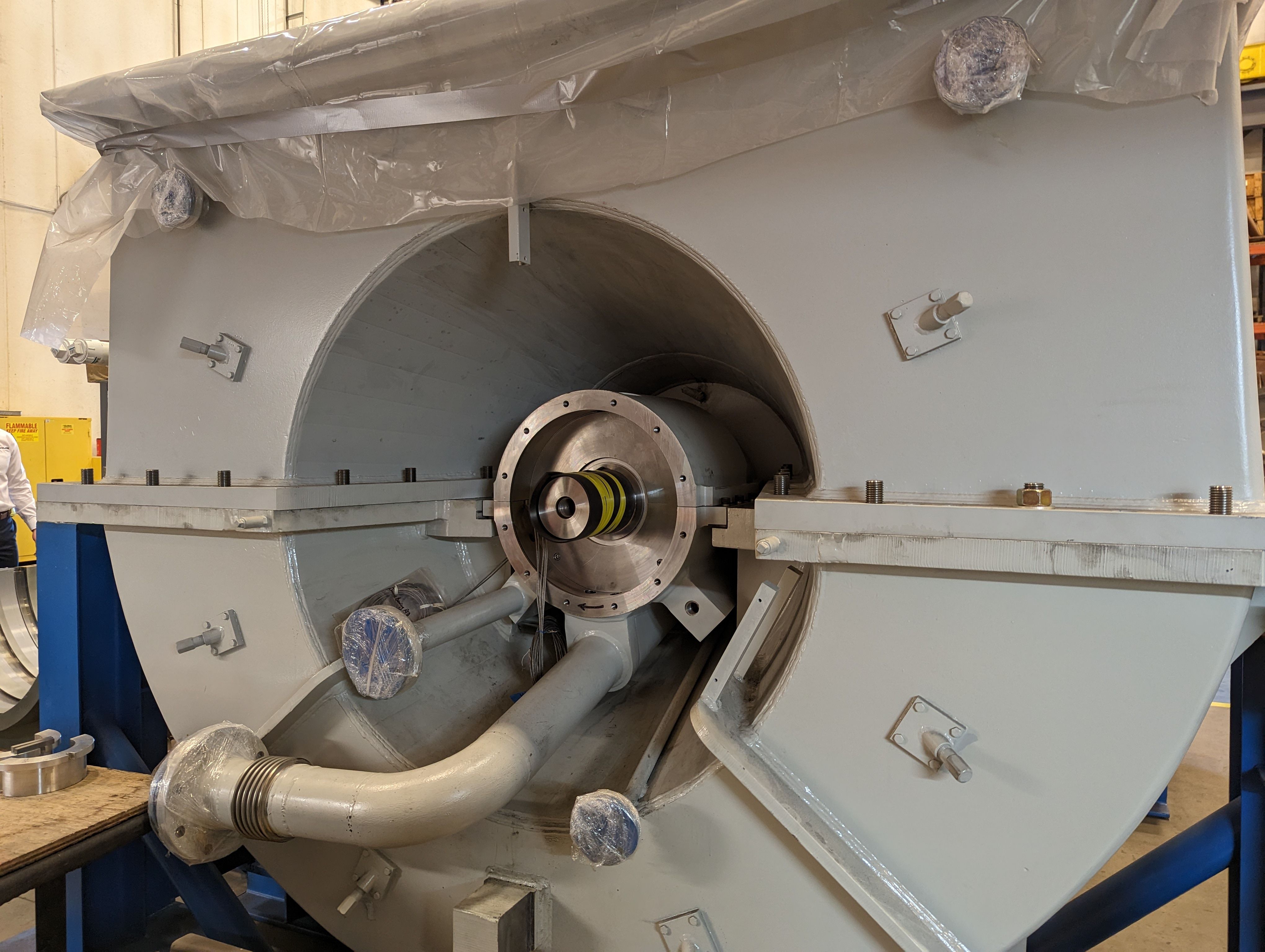Q&A: The Impact of Digitalization on Turbomachinery Maintenance
Preventive maintenance can be a hassle. Digitalization provides a framework to simplify the process, leading to better asset reliability.
Turbomachinery International sat down with John Bartos, CEO of Rotating Machinery Services (RMS), to talk about the company’s history, metrology services, the role of digital twins, and more.
Caption: Interior of equipment being worked on in the RMS shop. Credit: Turbomachinery International.

Q: Can you give an overview of RMS?
Bartos: RMS was established in 1998 with the goal of providing the turbomachinery aftermarket with service based on established relationships, solid engineering, and technical expertise. Our company is the OEM for the former Siemens fluid catalyst cracking unit (FCCU) hot gas expander product line. RMS secures equipment support led by experienced engineering staff to our customers. We are also the OEM for the AC compressor line of centrifugal, axial, and oil-free-screw compressors. RMS offers three ISO 9001:2015 certified locations where work on critical rotating equipment is completed. RMS is headquartered in an engineering and manufacturing facility in Bethlehem, PA. There is also a turbomachinery repair and service center in Houston, Texas, and a machining center in North Houston for large rotating equipment. We also provide aftermarket engineering, repair, overhaul, parts, and field services to all makes and models of rotating equipment. RMS-Breaux Machine Works provides the petroleum, industrial, and service industries with turnkey machining. We also offer milling and turning services.
Q: How is RMS involved in turbomachinery?
Bartos: We provide support to customers with critical rotating equipment, small rotating equipment, and field service support. Our customers experience our commitment to quality and engineering support. This involves repairs, overhauls, turnarounds, rerates, and upgrades for every type of rotating equipment including centrifugal compressors, oil-free screw compressors, steam turbines, and others. RMS’s experienced staff is also constantly in the field supporting customers with field service support globally. Every day an RMS field service representative is helping a customer with their critical rotating equipment. RMS’s field service team also offers rotating equipment planners who are onsite at customer facilities where they provide expertise in the planning of rotating equipment outages. RMS serves markets that include refineries, chemical plants, steel, food, beverage, mining, industrial, gas transmission, and aerospace.
Q: What problems do your metrology services help solve?
Bartos: Metrology’s most exciting use case is virtual assembly. RMS is using 3D digital mapping for maintenance performance analysis. We can digitally map a rotor and casing and virtually overlay that rotor into its casing to evaluate internal clearances. This allows us to adjust components such as internal labyrinth seal clearances and thrust bearing stack-up prior to physically installing the rotor. Metrology is allowing us to rethink historical maintenance practices. For instance, we can now align diaphragms throughout a steam turbine without ever installing the rotor or mandrel. We simply scan the rotor and overlay it onto the steam turbine bearing journals. Then we can virtually evaluate diaphragm positions and optimize placement in a fraction of the time.
Q: What do digital twins do for the industry?
Bartos: Let’s say a customer sends us an axial compressor. We leverage metrology to execute the work quicker and with higher accuracy versus historical methods. However, we also leverage the data that we collect to create a digital replica of each component and its assembled position. We can use that data to fabricate new components or offer upgrades to those components. We can also develop an optimized maintenance plan for future downtimes, fully integrating virtual assembly technology to significantly reduce the overhaul duration. We can even create 3D animated maintenance and operations procedures with this data, again to enable a more visual way of working for the customer.
Q: How can increased digitalization impact turbomachinery applications?
Bartos: At RMS, digitalization isn’t just an offering that we leverage within certain applications. We are standardizing it across every aspect of our business. Leveraging metrology and digital twins enables a completely new way of thinking about designing, operating, and maintaining turbomachinery. The data is no longer siloed apart. Digitalization allows us to put all relevant information into the hands of our customers in real-time within a centralized location. This enables RMS and our customers to make informed decisions quickly, whether that is re-rating a machine for a different operating context or simply assembling a machine to get it back in service to minimize production loss.
Q: Can you discuss the need for equipment modernization?
Bartos: In most of the instances where RMS performs work, the equipment is critical to service, and in many cases is un-spared (as an entire unit). There is a trend in the industry that is driving operators to extend intervals between maintenance and equipment overhauls. This potentially adds the risk of unplanned outages and even failures. Modern engineering analysis and advancements in metallurgy, coatings, and surface treatments are important to utilize. Using techniques such as frequency analysis, cyclic fatigue can be minimized. By improving aerodynamic matching to process conditions, efficiency and throughput can be honed.